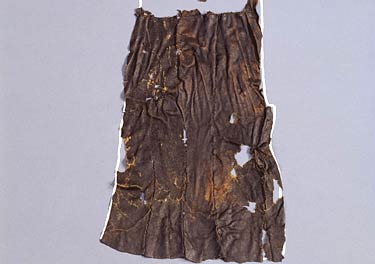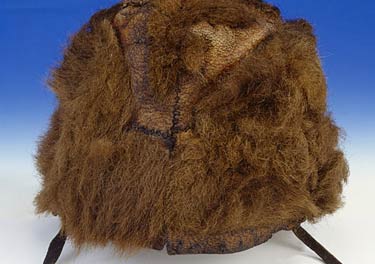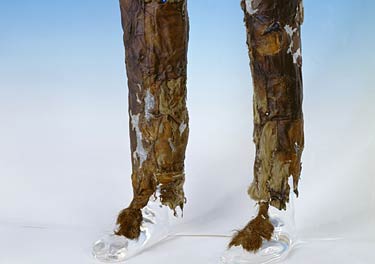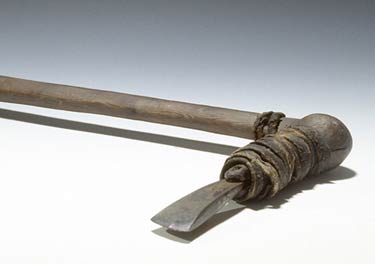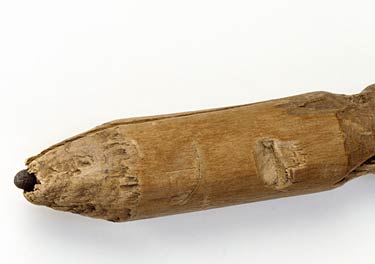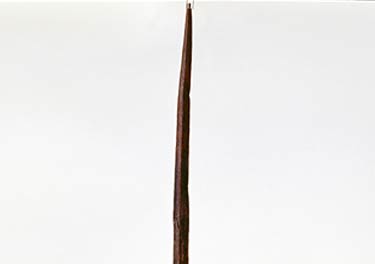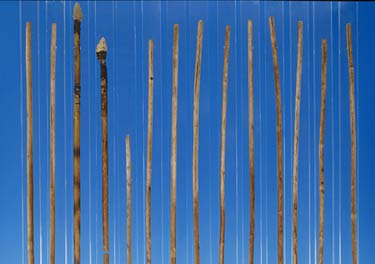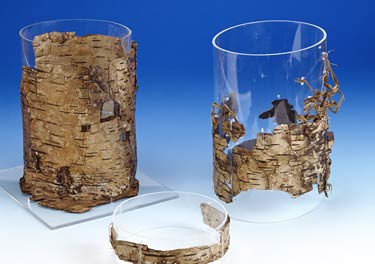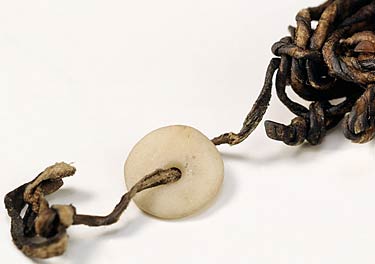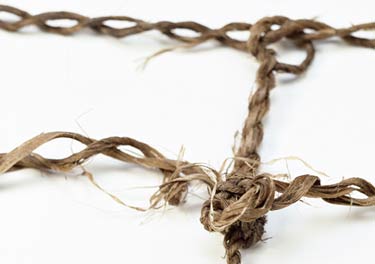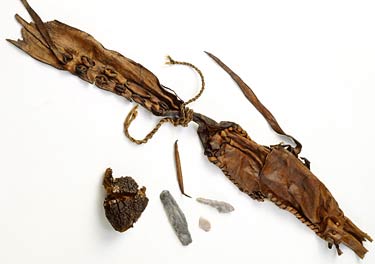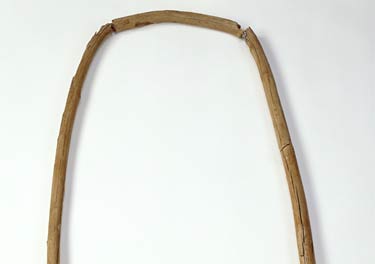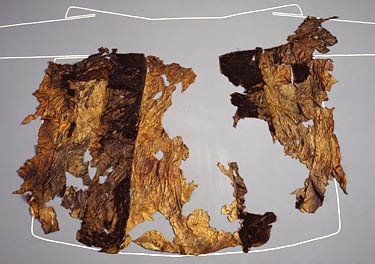
Hide Coat - Tanned hide of a goat stitched together to form a coat. The coat may or may not have had sleeves. The fur was worn facing out and alternated to create a light-dark pattern. The coat had no fastener so it was made to be worn open, it was closed using a belt, or it was lost. This artifact was very well worn indicating the iceman had used it for a very long time. (South Tyrol Museum of Archaeology)
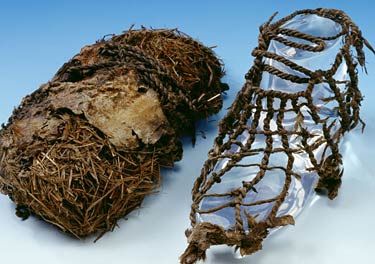
Shoes - Made of many parts, the inner netting made of grass covered by insulating hay and the outer part made of deerskin leather. These components were attached to an oval bearskin sole by leather straps. Experiments have recreated the shoes and found the design to be not only warm but also workable.
*Oldest of their kind in the world! (South Tyrol Museum of Archaeology)
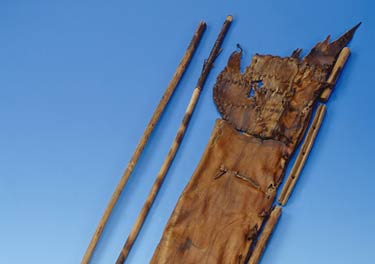
Quiver - Rectangular bag made of chamois hide and given structure by a rod of hazel wood that had broken in his lifetime. The lid and strap were not found but the bag did have a side pocket. The contents included arrows, arrowheads, and miscellaneous tools and supplies. (South Tyrol Museum of Archaeology)
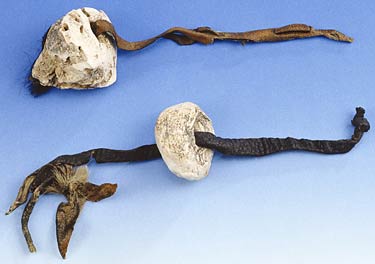
First Aid Kit/ Medicine - Strips of leather hide threaded through lumps of polypore fungus that were tied to clothing. The fungi have known medicinal properties against intestinal parasites. Researchers wonder if these medicinal purposes were yet known at this time period. Some would say yes due to the fact the iceman had an intestinal infection which led him to use these fungi. (South Tyrol Museum of Archaeology)

